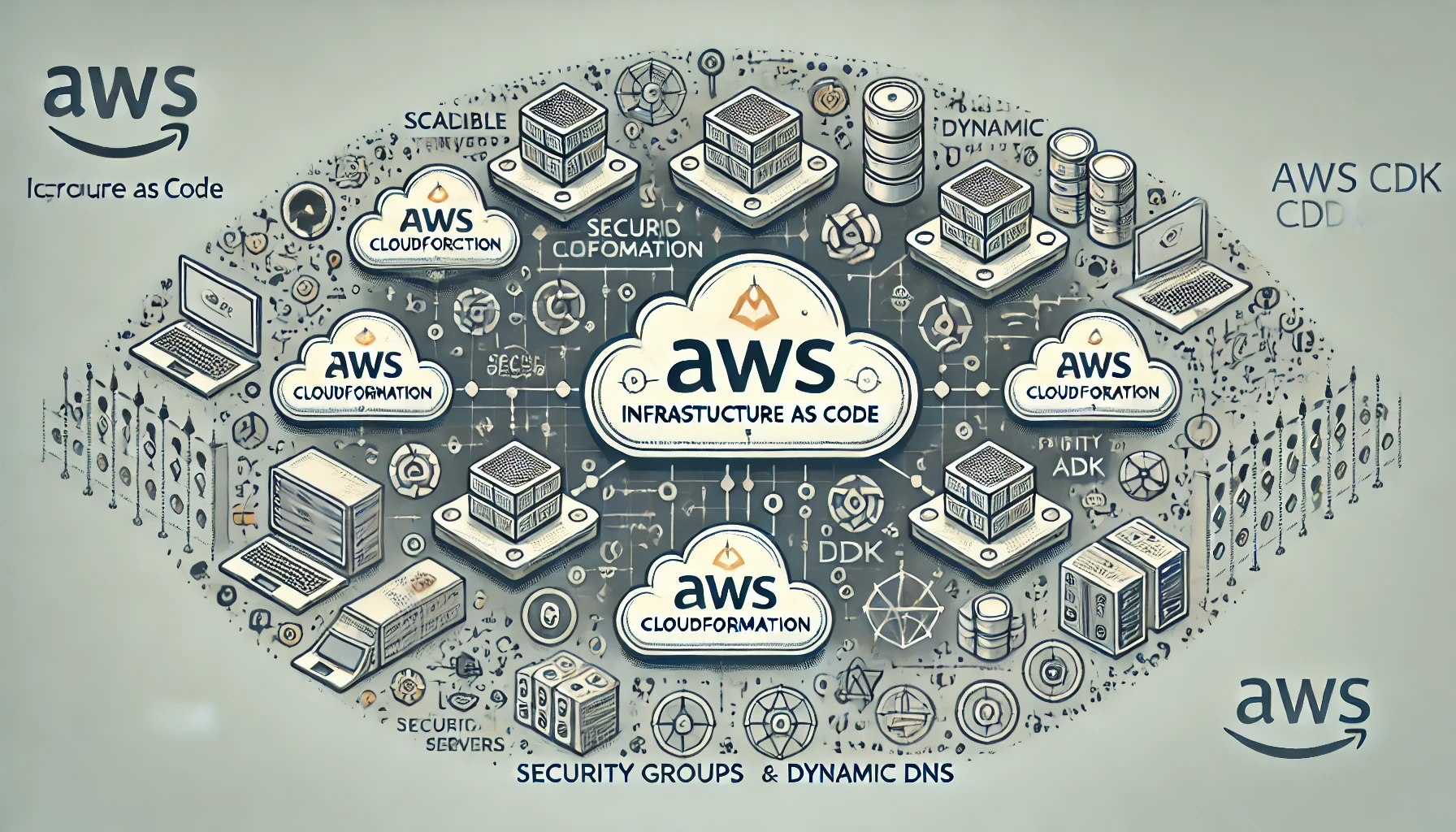Implementing Infrastructure as Code with AWS CloudFormation and AWS CDK
 Parth Prajapati
Parth Prajapati
Implementing Infrastructure as Code (IaC) in AWS has revolutionized the way we manage and deploy resources in the cloud. Using tools like AWS CloudFormation and the AWS Cloud Development Kit (CDK), teams can automate infrastructure provisioning and manage resources efficiently. This blog will guide you through the essential steps for setting up Infrastructure as Code with AWS CloudFormation and AWS CDK. If you're looking to implement Dynamic DNS in AWS as part of your setup, these tools can also streamline configuration management and ensure scalability.
What is Infrastructure as Code (IaC)?
Infrastructure as Code (IaC) is a method of provisioning and managing infrastructure through machine-readable configuration files rather than physical hardware or interactive configuration tools. IaC allows for version-controlled, reusable, and scalable infrastructure, enabling teams to create and manage resources in a programmatic way, thus minimizing errors and improving consistency.
Benefits of Infrastructure as Code (IaC)
Automation: IaC enables full automation of provisioning, scaling, and configuration of resources.
Consistency: Ensures consistent environments for development, testing, and production.
Efficiency: Speeds up the deployment process and reduces manual errors.
Version Control: IaC files are stored in repositories, making it easy to track changes and roll back if necessary.
What is AWS CloudFormation?
AWS CloudFormation is a powerful service that enables users to model, provision, and manage AWS resources through JSON or YAML templates. By reading these templates, CloudFormation automates the provisioning and configuration of resources, providing a reliable and repeatable setup. Businesses looking to optimize their AWS infrastructure often hire AWS developers to leverage this service for efficient resource management.
How is CloudFormation Useful?
AWS CloudFormation is especially helpful in creating reusable and version-controlled infrastructure setups, which is ideal for complex environments. With CloudFormation, you can also implement Dynamic DNS in AWS for scalable and automated DNS management.
Creating Infrastructure with AWS CloudFormation: Step-by-Step Implementation
Step 1: Create a Template
Define your desired infrastructure resources in a CloudFormation template. This template can be written in JSON or YAML, and it should describe all the resources you need, including instances, security groups, and networking configurations. The CloudFormation console provides sample templates to help you get started.
Step 2: Create a Stack
Once the template is ready, you’ll create a stack in CloudFormation. The stack is the complete set of resources defined in the template. From the CloudFormation console, select Create Stack and upload your template to initiate resource provisioning.
Step 3: Monitor Resource Creation
CloudFormation allows you to monitor the progress of your stack’s creation. The stack’s status updates in real-time, showing whether each resource has been created successfully or if there are any issues.
Step 4: Clean Up Resources
When you no longer need the infrastructure, you can delete the stack to terminate all resources created by the template. This is helpful for testing purposes, as it allows you to quickly clean up resources and avoid unnecessary costs.
What is AWS CDK (Cloud Development Kit)?
AWS CDK (Cloud Development Kit) is a framework that allows developers to define AWS infrastructure using popular programming languages like TypeScript, Python, and JavaScript. Unlike CloudFormation, which uses declarative templates, CDK is imperative, allowing you to define infrastructure as code within your preferred language.
Why AWS CDK is Helpful in IaC
AWS CDK simplifies complex setups by allowing you to use the power of programming languages, enabling modularization and reuse. CDK integrates seamlessly with AWS CloudFormation, so your code is eventually synthesized into a CloudFormation template, which provides all the same benefits.
Creating Infrastructure with AWS CDK: Step-by-Step Guide
Prerequisites
Before starting, ensure you have an AWS account, the AWS CLI installed, and an understanding of IaC. Install the AWS CDK toolkit by running the command:
npm install -g aws-cdk
Step 1: Install and Initialize CDK
Run cdk init to set up a new AWS CDK project. This command initializes a project structure with sample files to help you get started.
Step 2: Create a New Project
Navigate to the directory where you want to create your new CDK project, and run:
cdk init app --language <language>
Replace <language> with your preferred programming language, such as typescript, python, or javascript.
Step 3: Initialize the CDK Project
The initialization command creates the necessary files and folders, including a basic setup that makes it easier to start defining AWS resources.
Step 4: Define AWS Resources
Within your project, you can start defining resources like S3 buckets, EC2 instances, and VPCs in your chosen programming language. You may also include configurations for Dynamic DNS in AWS within these resources to automate DNS changes.
Step 5: Synthesize the CloudFormation Template
After defining your resources, run:
cdk synth
This command converts your CDK code into a CloudFormation template, allowing you to preview the template before deploying.
Step 6: Deploy the Infrastructure
Once you’re satisfied with the template, deploy it to AWS by running:
cdk deploy
CDK will use CloudFormation under the hood to create the resources defined in your template.
Step 7: Destroy the Resources
To remove the resources you created, run:
cdk destroy
This command deletes all resources, helping you avoid charges for unused resources.
Conclusion
Using AWS CloudFormation and AWS CDK allows for scalable and efficient Infrastructure as Code in AWS. These tools enable a fully automated approach to managing resources, ensuring consistency and cost-efficiency. By implementing IaC, including configurations for Dynamic DNS in AWS, organizations can gain better control over infrastructure while reducing the complexity and time associated with manual setups.
Subscribe to my newsletter
Read articles from Parth Prajapati directly inside your inbox. Subscribe to the newsletter, and don't miss out.
Written by

Parth Prajapati
Parth Prajapati
Web & Mobile Dev Expert | Vue.js, React, WordPress, Flutter, Bubble. I bring websites and mobile apps to life, crafting beautiful and functional experiences across all platforms. My passion lies in helping businesses translate their ideas into reality, ensuring a seamless user journey on any device.